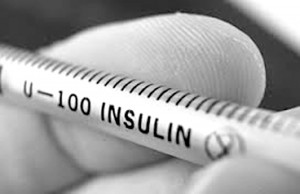Diabetes is pervasive among Blacks
25th April 2016 · 0 Comments
By Glenn Ellis
Contributing Writer
(George Curry Media) – As rampant as diabetes is in our community, it is well past time we took some serious action. Diabetes is a disease that affects the body’s ability to produce or respond to insulin, a hormone that allows blood glucose (blood sugar) to enter the cells of the body and be used for energy. Diabetes falls into two main categories: type 1, which usually begins during childhood or adolescence, and type 2, the most common form of the disease, usually occurring after age 45, but is increasingly being diagnosed in children and adolescents.
Approximately 2.8 million or 13 percent of all African Americans have diabetes, with one-third of them not knowing it. With its complications — blindness, kidney disease, amputations, heart attack and stroke — diabetes is the fifth deadliest disease in the United States, and it has no cure.
African Americans are two times more likely to have diabetes than non-Hispanic whites. Twenty-five percent of African Americans between the ages of 65 and 74 have diabetes.
One in four African-American women over 55 years of age has diabetes.
African Americans experience higher rates of at least four of the serious complications of diabetes: heart disease, blindness, amputation and end stage renal disease (kidney failure).
Heart disease strikes people with diabetes more than twice as often as it strikes people without diabetes. People with diabetes are five times more likely to suffer strokes, and once having had a stroke, are two to four times as likely to have a recurrence. Deaths from heart disease in women with diabetes have increased 23 percent over the past 30 years compared to a 27 percent increase in women without diabetes. Deaths from heart disease in men with diabetes have decreased by only 13 percent compared to a 36 percent decrease in men without diabetes.
Diabetic retinopathy is a term used for all abnormalities of the small blood vessels of the retina caused by diabetes, such as weakening of blood vessel walls or leakage from blood vessels. African Americans are twice as likely to suffer from diabetes-related blindness.
Diabetes is the most frequent cause of non-traumatic lower limb amputations. The risk of a leg amputation is 15 to 40 times greater for a person with diabetes. Each year, 82,000 people lose their foot or leg to diabetes. Among people with diabetes, African Americans are 1.5 to 2.5 times more likely to suffer from lower limb amputations. More than 60 percent of non-traumatic lower limb amputations in the U.S. occur among people with diabetes.
Ten to twenty-one percent of all people with diabetes develop kidney disease. African Americans with diabetes are 2.6 to 5.6 times more likely to suffer from kidney disease with more than 4,000 new cases of end stage renal disease each year.
Patient education is critical. People with diabetes can reduce their risk for complications if they are educated about their disease, learn and practice the skills necessary to better control their blood glucose levels, and receive regular checkups from their health care team.
African Americans with diabetes experience kidney failure about four times more often than white Americans with diabetes. They are also more likely to develop other serious complications such as heart disease and strokes and to experience greater disability than white Americans with diabetes. Some studies suggest that many African Americans may not be aware of the link between high blood pressure and chronic kidney disease. It has been reported that as many as 43 percent of African Americans who are now on dialysis did not know they had kidney failure until about a week before starting dialysis.
It is important for African Americans to have an increased awareness of these risk factors and to have a doctor regularly check their blood sugar, blood pressure and urine protein levels.
Here are some facts everyone should be aware of concerning African Americans and chronic kidney disease:
• African Americans suffer from kidney failure disproportionately. African Americans constitute as much as 50 percent of all patients treated for kidney failure in the U.S., but only about 12 percent of the U.S. population.
• African Americans also develop kidney failure at an earlier age than white Americans, with the start of treatment for kidney failure was 57 years, compared with 63 in Caucasians.
• Diabetes is the leading cause of kidney failure in African Americans, accounting for 43 percent of their new cases of kidney failure among each year. For every six White Americans who have diabetes, 10 African Americans have diabetes.
The prevalence of diabetes is highest (32 percent) among African American women aged 60 to 74 years.
• The prevalence of diabetes is highest (32 percent) among African-American women aged 60 to 74 years.
• A third of the diabetes cases among African Americans are undiagnosed.
• High blood pressure is the second-leading cause of kidney failure among African Americans, accounting for 34 percent of the new cases each year. However, high blood pressure remains the leading cause of death overall in African Americans because of its link with heart attacks and strokes.
As you can see, diabetes is no joke. With the current “epidemic” of obesity in our country hitting African Americans disproportionately, we’ve got to take this thing seriously. If not for yourself, do it for those who love you and whose lives you will change forever.
Glenn Ellis, is a regular media contributor on Health Equity and Medical Ethics. He is the author of Which Doctor?, and Information is the Best Medicine. Readers of this article should always consult his or her healthcare provider to determine the appropriateness of the information for their own situation or if they have any questions regarding a medical condition or treatment plan.
This article originally published in the April 25, 2016 print edition of The Louisiana Weekly newspaper.



